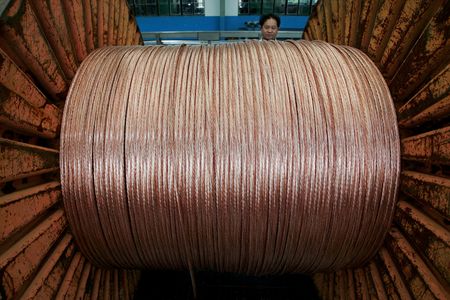
BEIJING (Reuters) – China’s factory activity in January is expected to have contracted more slowly than in December, a Reuters poll showed on Monday, with production hampered as workers continued to fall sick after the government dismantled its “zero-COVID” regime.”
While the “exit wave” of infections passed through the population and workforce faster than economists had anticipated, disruptions on production lines persisted.
The official manufacturing purchasing managers’ index (PMI) improved to 49.8 in January, compared with 47.0 in December, according to the median forecast of 25 economists polled by Reuters, reversing a downward trend running from September, but falling shy of breaking back into expansion territory.
An index reading above 50 indicates expansion in activity on a monthly basis and a reading below indicates contraction. The official manufacturing PMI, which largely focuses on big and state-owned firms, and its survey for the services sector, will be released on Tuesday.
The data is one of the first indicators from the National Bureau of Statistics of how the economy has managed following the end of China’s “zero-COVID” regime and over the week-long Lunar New Year festival, that ended on Friday. Many manufacturers had raised concerns that COVID infections among their workforce and seasonal factory closures would significantly impact industrial productivity for the month.
Eighty percent of people in China had already been infected with COVID-19 before festivities began, according to China’s chief epidemiologist, with the “exit wave” passing through the country faster than economists had anticipated and bringing fewer disruptions too.
“Early signs suggest that conditions improved in January,” according to a note from Capital Economics, “and any lingering supply-side issues will matter less at a time of year when factories wind down production in any case,” they added while forecasting a PMI reading of 50.0.
The world’s second-largest economy continues to face major external headwinds on the demand-side, however, with China’s export-orientated manufacturers continuing to report shrinking order books as fears of a global recession linger.
China’s cabinet pledged on Saturday to boost consumption as to help drive the economy’s recovery. Over the Lunar New Year holiday, consumption increased 12.2% on the same period last year despite concerns that the services sector might be hobbled by staff shortages resulting from COVID.
The private sector Caixin manufacturing PMI, which centres more on small firms and coastal regions, will be published on Feb. 1. Analysts polled by Reuters expect a headline reading of 49.5, up from 49.0 in December.
(Polling by Madhumita Gokhale; Reporting by Joe Cash; Editing by Simon Cameron-Moore)

